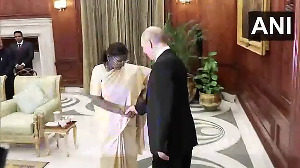Sources say companies will have to keep the market share of merged entities below 50% in all circles
Telecom companies exploring mergers and acquisitions (M&As) will have to keep the market share of merged entities below 50 per cent in all circles, both in terms of subscriber base and adjusted gross revenue (AGR), say sources. The Department of Telecommunications (DoT) has taken a decision to consider both parameters in determining the limit on market share, according to the final draft guidelines, likely be announced soon. Earlier, the final draft of the new M&A guidelines, already cleared by an Empowered Group of Ministers on telecom, headed by Finance Minister P Chidambaram, did not arrive at clarity on the formula.
The Department of Telecommunications (DoT) has taken a decision to consider both parameters in determining the limit on market share, according to the final draft guidelines, likely be announced soon. Earlier, the final draft of the new M&A guidelines, already cleared by an Empowered Group of Ministers on telecom, headed by Finance Minister P Chidambaram, did not arrive at clarity on the formula.
According to a source privy to the final guidelines being decided, after a merger, companies will not be permitted more than 50 per cent market share in any circle on subscriber base as of December 31 or June 30 of each year and AGR as on March 31 of the preceding year.
It appears, if a company exceeds 50 per cent market share in any of the country’s 22 circles, it will get one year, from the date of approval of the M&A, to reduce it. If it fails to do so in this time, “suitable action will be initiated by the licensor”, DoT has noted in the proposal on the final guidelines, the content of which has been examined by Business Standard.
On Wednesday, DoT Secretary M F Farooqui said the final M&A guidelines would be notified within the next 10 days. He was speaking on the sidelines of a seminar organised by the Confederation of Indian Industry.
Based on data published by the Telecom Regulatory Authority of India, the top two companies, Bharti Airtel and Vodafone India, together cross the 50 per cent cap in 15 of the 22 circles (70 per cent in Rajasthan) by combined AGR, and in three circles in terms of combined subscriber base. This means they will be unable to explore an M&A.
“Taking revenue as the parameter could discourage companies from going for possible M&As. Subscriber market share can be adjusted by cutting inactive customers. Companies will certainly be interested in increasing their revenue market share, instead of reducing,” said Jaideep Ghosh, partner (telecom), KPMG India.
Both on subscriber and revenue market share, mergers are possible between Vodafone and Aircel, Idea Cellular and Aircel, and Reliance Communications and Aircel, where the merged entities do not cross 50 per cent market share in any of the 22 circles.
DoT also says the merged entity (the resultant company after a merger) will have to abide by the lock-in period that the earlier entities might have. The lock-in condition bars telecom companies from transferring equities within three years of buying spectrum from an auction. The lock-in period will apply in respect of new shares that might be issued in respect of the resultant company (transferee company).
Earlier, the Attorney-General (A-G) had said a company transferring assets would technically cease to exist after the merger or amalgamation. If the government considers this a breach of the licence conditions, as mentioned in the Notice Inviting Applications. This could, the A-G opined, deter people from participating in auctions.
The final draft of the M&A guidelines also note that in the first year, if a lock-in period exists, the cross-holding norms would not apply. The latter bar any entity or individual from more than 10 per cent equity in two competing telcos.
On Tuesday, Bharti acquired Loop Mobile’s subscribers and assets in the Mumbai circle for Rs 700 crore (Rs 7 billion).











